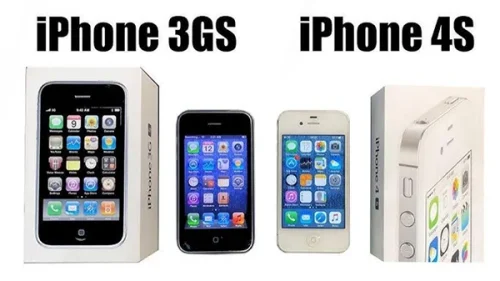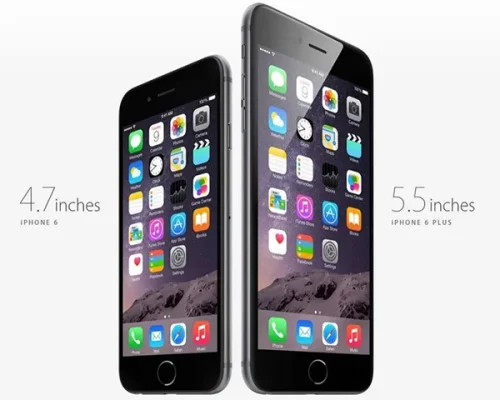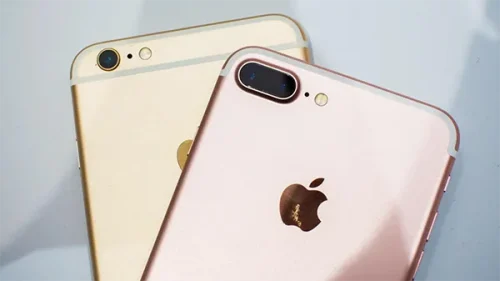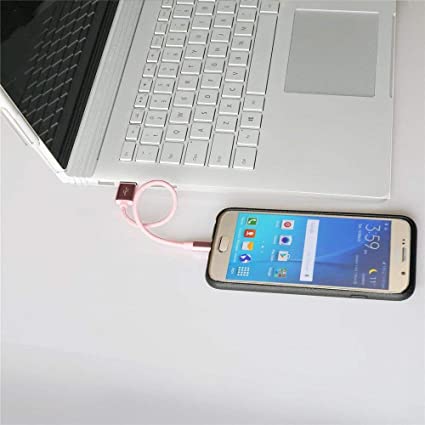A Comprehensive History Of iPhone Battery And Charging

If you’re looking to trace the trajectory of 21st-century technology, examining the evolution and history of iphone chargers is an excellent starting point. The iPhone has revolutionized the way we communicate and interact with technology. Over the years Apple has continuously improved the battery and charging technology of its iconic device.
From the early days of the original iphone chargers to the latest models, there have been significant advancements in battery capacity, charging speeds, and compatibility with different charging interfaces. In this article, we will take a comprehensive look at the evolution of iPhone battery and iPhone chargers over the years, highlighting key milestones and innovations along the way.
iPhone Battery And Charger Specifications.
In this section, we will explore the evolution of Apple’s iPhones from the original iphone first generation charger 2G to the latest 15 Pro Max. We will see significant changes in iphone charging port evolution , battery capacity and charging technology have marked each generation.
- 2007: The Original iPhone (iPhone 2G)
In 2007, Apple released the original iPhone, also known as the iPhone 2G. It is the first generation iphone charger. This groundbreaking device featured a 3.7V 1400mAh lithium-ion battery, which was considered impressive at the time. Although it only had a 2.0-megapixel camera, the iPhone 2G set new benchmarks in the smartphone industry. It came bundled with a 5V1A apple first charger and a 5W adapter, and utilized a 30-pin dock charger cable. However, this cable was later replaced by more advanced technology in the iPhone 5. - 2008: iPhone 3G
In 2008, Apple unveiled the iPhone 3G, marking the second generation of the iPhone series. The device was equipped with a slightly smaller 1150mAh battery compared to its predecessor, the iPhone 2G. Despite the reduction in battery size, the iPhone 3G brought about a significant advancement with the introduction of 3G capabilities. This enhancement allowed users to access the internet at faster speeds, revolutionizing the mobile browsing experience.
As for the charger parameters, the iPhone 3G maintained compatibility with the standard 5V1A charger and a 5W adapter, similar to the original iPhone. The inclusion of 3G capabilities, coupled with the launch of the App Store, transformed the iPhone into a more versatile and internet-centric device, opening up a world of possibilities for users to explore and customize their mobile experience. - 2009-2011: iPhone 3GS, iPhone 4, iPhone 4S
From 2009 to 2011, Apple released the iPhone 3GS, iPhone 4, and iPhone 4S. During this period, as users increasingly shifted from PC-based to mobile internet usage, Apple focused on improving battery capacities to meet evolving demands. The iPhone 4, released in 2010, featured a 3.5-inch Retina display and battery improvements from 1220mAh to 1420mAh, delivering a better user experience.
Apple introduced the 30-pin dock connector with the iPhone 3GS in 2009. This connector was used for charging the device and connecting it to other devices, such as computers or speakers. It provided a reliable and convenient way to charge the iPhone and transfer data. The charging power for the iPhone 3GS and subsequent models was typically 5 volts and 1 amp. 2012-2013: iPhone 5, iPhone 5S, iPhone 5C
In 2012 and 2013, Apple released three iPhone models: the iPhone 5, iPhone 5S, and iPhone 5C. These models brought significant changes in terms of battery capacities and charging connectors, reflecting Apple’s commitment to meeting the evolving demands of smartphone users.The iPhone 5, iPhone 5S, and iPhone 5C had battery capacities ranging from 1440mAh to 1560mAh. These increased battery capacities were a response to the changing smartphone habits of users, as they started using their phones for more than just calls and texts. The larger battery capacities aimed to provide better battery life and support the increased usage of features like internet browsing, apps, games, and multimedia.
The iPhone 5, iPhone 5S, and iPhone 5C introduced a new charging connector called Lightning, replacing the traditional 30-pin dock connector. Lightning connector featured 8 pins and allowed for faster charging and data transfer. The introduction of the Lightning connector brought a more streamlined and efficient design to the iPhone models. The Lightning connector became the standard charging and data transfer port for subsequent iPhone models until it was superseded by USB-C in later years.
These changes in battery capacities and charging connectors during this period reflected Apple’s recognition of the increasing importance of smartphones in users’ daily lives. The larger battery capacities aimed to provide better battery life to support the growing usage of smartphones, while the Lightning connector brought faster charging and a more efficient design to the iPhone models.- 2014: iPhone 6, iPhone 6 Plus
The iPhone 6 and iPhone 6 Plus, launched in 2014, brought significant advancements in battery capacity to meet the evolving needs of smartphone users. These devices were equipped with robust batteries to ensure a seamless and uninterrupted user experience. The iPhone 6 featured a battery capacity of 1810mAh. The larger iPhone 6 Plus boasted an even more substantial battery capacity of 2915mAh.
These increased battery capacities were a strategic move by Apple to address the evolving usage patterns of consumers who relied on their iPhones for various functions, such as music, applications, and photography. The iPhone 6 and iPhone 6 Plus were designed to be charged using a Lightning cable, which was introduced by Apple in 2012. Lightning cable provided a convenient and efficient way to charge the devices and transfer data. The charging power for the iPhone 6 and iPhone 6 Plus was typically 5 volts and 1 amp, similar to previous iPhone models. - 2015: iPhone 6S, iPhone 6S Plus
The iPhone 6S and iPhone 6S Plus, released in 2015, brought significant improvements in performance and battery life. These models introduced innovative features and optimizations to enhance the overall user experience. The iPhone 6S featured a battery capacity of 1715mAh. The larger iPhone 6S Plus had a higher battery capacity of 2750mAh. These battery capacities were designed to provide sufficient power to support the advanced features and functionalities of the devices.
The iPhone 6S and iPhone 6S Plus were compatible with the Lightning cable, which was introduced by Apple in 2012. Lightning cable provided a convenient and efficient way to charge the devices and transfer data. The charging power for the iPhone 6S and iPhone 6S Plus was typically 5 volts and 1 amp, similar to previous iPhone models. - 2016: iPhone 7, iPhone 7 Plus
The iPhone 7 and iPhone 7 Plus, released in 2016, brought notable improvements to Apple’s smartphone lineup. While the overall design and major upgrades were not significant compared to the previous generation, there were advancements in battery capacity and camera capabilities. The iPhone 7 featured a battery capacity of 1960mAh. And the iPhone 7 Plus, with its dual-camera setup, required additional battery life to support the enhanced features and had a larger battery capacity.
The iPhone 7 and iPhone 7 Plus were compatible with the Lightning cable. It had been the standard charging and data transfer cable for iPhone models since its introduction in 2012. The charging power for the iPhone 7 and iPhone 7 Plus was typically 5 volts and 1 amp, similar to previous iPhone models. It is important to use genuine Apple chargers and cables to ensure optimal charging performance and to avoid potential compatibility issues or damage to the device. - 2017: iPhone 8, iPhone 8 Plus
The iPhone 8 and iPhone 8 Plus, launched by Apple in 2017, introduced several new features, including wireless charging and faster charging capabilities. Let’s take a closer look at the charging capabilities of these devices. The iPhone 8 came with a 1821mAh battery. The iPhone 8 Plus boasted a larger 2675mAh battery. Both the iPhone 8 and iPhone 8 Plus introduced wireless charging, allowing users to charge their devices by simply placing them on a compatible wireless charging pad.
The iPhone 8 and iPhone 8 Plus support fast charging, which enables users to charge their devices to 50% battery capacity in approximately 30 minutes. You will need a USB-C to lightening cable to charge these phones. The recommended power adapters for fast charging include Apple’s 18W, 20W, 29W, 30W, 35W, 61W, 67W, 87W, or 96W USB-C Power Adapter, or a comparable third-party USB-C power adapter that supports USB Power Delivery (USB-PD). - 2018: iPhone X, iPhone XS, iPhone XR, iPhone XS Max
In 2018, Apple made a significant leap with the introduction of the iPhone X, iPhone XS, iPhone XR, and iPhone XS Max, deliberately skipping the 9 series. This strategic move involved replacing the smaller-capacity batteries, which were below 2500mAh, with higher-capacity ones. The battery capacities of these models ranged from 2658mAh to 3174mAh, marking a considerable increase compared to their predecessors. The decision to enhance battery capacities was driven by the evolving landscape of smartphone usage, where iPhones had become central hubs for social media, streaming, and photography. The larger batteries were designed to meet the escalating demands of users relying on their devices for various multimedia and communication activities.
To utilize fast charging, you will need a compatible power adapter and cable. The iPhone X, iPhone XS, iPhone XR, and iPhone XS Max use a Lightning connector for charging and data transfer. For fast charging, you will need a USB-C to Lightning cable. It is recommended to use an Apple-certified cable to ensure compatibility and safety.
To fast charge your iPhone X, iPhone XS, iPhone XR, or iPhone XS Max, you will need a power adapter that supports USB Power Delivery (USB-PD). Apple provides various power adapter options, including the Apple 18W, 20W, 29W, 30W, 35W, 61W, 67W, 87W, or 96W USB-C Power Adapter. You can also use a comparable third-party USB-C power adapter that supports USB-PD. - 2019: iPhone 11, iPhone 11 Pro, iPhone 11 Pro Max
In 2019, Apple continued its trend of battery improvements with the release of the iPhone 11 series, comprising the iPhone 11, iPhone 11 Pro, and iPhone 11 Pro Max. Notably, these models boasted batteries that exceeded the 3000mAh threshold, with the Pro Max leading the pack with a substantial 3969mAh battery.
The augmented battery capacities were strategically implemented to support the devices’ Super Retina XDR displays and advanced camera systems. This focus on enhancing battery life aimed to provide users with an overall improved and more immersive iPhone experience, particularly in the realms of display quality and photography capabilities.
The iPhone 11, iPhone 11 Pro, and iPhone 11 Pro Max use a Lightning connector for charging and data transfer. For fast charging, you will need a USB-C to Lightning cable. It is recommended to use an Apple-certified cable to ensure compatibility and safety. - 2020: iPhone 12, iPhone 12 Pro Max
In 2020, Apple unveiled the iPhone 12 and iPhone 12 Pro Max. The iPhone 12 had a battery capacity of 2815mAh, which was slightly less than 3000mAh, while the Pro Max had a slightly smaller capacity than its predecessor. These models featured upgraded internals, including the powerful A14 Bionic chip. The Pro models offered enhanced camera systems, including the introduction of LiDAR technology for improved augmented reality experiences.
The iPhone 12 series also introduced MagSafe technology for faster wireless charging and 20W PD charging for faster cable charging. Additionally, they are compatible with Qi wireless charging, providing a convenient way to charge wirelessly at speeds up to 7.5W. Notably, Apple excluded chargers from the box, emphasizing the wireless charging capabilities of the devices. The iPhone 12 Mini, iPhone 12, iPhone 12 Pro and iPhone 12 Pro Max uses a USB-C to Lightning cable for charging and data transfer. - 2021:iPhone SE (2nd Generation)
Also released in 2021, the second generation of the iPhone SE combined the design of the iPhone 8 with upgraded internals. It featured the A13 Bionic chip for impressive performance capabilities. The iPhone SE (2nd generation) impresses with its built-in rechargeable lithium-ion battery, delivering remarkable battery life across various activities.
For video playback, it offers up to 13 hours of local playback and up to 8 hours for streamed videos, while boasting an impressive 40 hours of audio playback. Notably, this iPhone model supports fast charging capabilities, enabling a swift charge of up to 50% in just 30 minutes when using an 18W adapter or higher (available separately). Moreover, it accommodates wireless charging through Qi-compatible chargers, offering a convenient way to power up your device.
The iPhone SE (2nd generation) uses a Lightning connector for charging and data transfer. It is compatible with the Apple USB-C to Lightning cable for fast charging. - iPhone 13 Mini, iPhone 13, iPhone 13 Pro, iPhone 13 Pro Max
Launched in 2021, the iPhone 13 series introduced several improvements, including enhanced battery life and processing power. The Pro models featured the powerful A15 Bionic chip, ProMotion displays with up to 120Hz refresh rates, and improved camera systems with advanced computational photography features. For the iPhone 13 Mini, iPhone 13, iPhone 13 Pro, and iPhone 13 Pro Max:
Each model is equipped with a built-in rechargeable lithium-ion battery that ensures lasting power for daily use. All versions support MagSafe wireless charging, delivering up to 15W of charging capacity, along with Qi wireless charging, offering a power output of up to 7.5W. The iPhone 13 series does come with a USB-C to Lightning cable, which can be used for charging and data transfer. - 2022: iPhone SE (3rd generation)
In 2022, Apple released the third generation of the iPhone SE. This model retained the compact design of its predecessor but received internal upgrades, including the A15 Bionic chip for better performance and efficiency. The iPhone SE (3rd generation) boasts a powerful built-in rechargeable lithium-ion battery, delivering impressive performance. The iPhone SE (2022) improved the battery size over the previous model, just like Apple usually does with their phones. This iPhone SE has a 2,018mAh battery. That’s bigger than the 1,821mAh battery in the iPhone SE (2020) from two years ago.
Additionally, it supports fast-charging capabilities, reaching a 50% charge in just 30 minutes when used with a 20W adapter or higher (sold separately). It’s also compatible with Qi wireless chargers for added convenience and offers charging via USB connection to a computer system or power adapter. Learn more about how wireless fast charging technology works. The iPhone SE (3rd generation) uses a Lightning connector for charging and data transfer. To charge the device, you can use the Lightning cable . - iPhone 14 series
In the fall of 2022, Apple released the iPhone 14 series. The iPhone 14 series comes in a variety of battery capacities, with the standard iPhone 14 model featuring a 3,279mAh battery, equivalent to approximately 12.68Wh of capacity. The iPhone 14 Plus has a larger 4,325mAh battery, which equates to about 16.68Wh. By comparison, the iPhone 14 Pro is expected to have a 3,200mAh battery with an estimated 12.38Wh of power, while the iPhone 14 Pro Max is said to have a 4,323mAh battery with around 16.68Wh of power. In addition, this model also supports PD protocol. - iPhone 15 Series
The iPhone 15 series upgrade will be released in 2023. The battery capacity of iPhone 15 and iPhone 15 Plus will increase to 3,349mAh and 4,383mAh respectively. This enhancement translates into impressive video playback times of 20 and 25 hours, respectively, setting a new benchmark.
Additionally, the iPhone 15 Pro and Pro Max models boast battery capacities of 3,274mAh and 4,422mAh, along with corresponding wattage values. Comparing these figures with their iPhone 14 counterparts shows a clear improvement in the iPhone 15 series’ battery capabilities, promising users an enhanced and longer-lasting experience.
The iPhone 15 series adopts the USB-C connector, replacing the proprietary Lightning charging plug used in previous iPhone models. You can charge your iPhone 15 with a USB-C cable and a power adapter compliant with the USB-C standard, including USB Power Delivery. - iPhone 16 Series
The iPhone 16 series released in September 2024 has made significant improvements in battery life and charging technology. The battery capacity of the iPhone 16 models has been improved: the iPhone 16 series is equipped with 3561mAh, 3582mAh, 4674mAh, and 4685mAh batteries respectively. These improvements can extend the use time, and the battery life can be extended by up to 20% compared with previous models.
In terms of charging, the iPhone 16 supports Apple’s latest 27W fast charging, allowing users to charge the device from 0 to 50% in about 30 minutes. In addition, the series also supports up to 15W MagSafe wireless charging, and also supports the Qi2 wireless charging standard, making the charging experience more convenient and wireless. Compared with the previous generation, the iPhone 16 mobile phone is still as conservative as ever in terms of charging power. Although the power consumption performance of this generation is released and the input power is increased, the charging power has not been significantly improved. The extra power consumption is only for the operation of the mobile phone.
| iPhone battery and charging technology comparison table over the years | ||||
|---|---|---|---|---|
| Model | Year | Battery | Charging Power | Charging Cable |
| iPhone 2G (Original) | 2007 | 1400mAh Li-ion | 5V1A Charging Power | 30-pin to USB-A cable |
| iPhone 3G | 2008 | 1150mAh | 5V1A Charging Power | 30-pin to USB-A cable |
| iPhone 3GS | 2009 | 1220 mAh | 5V1A Charging Power | 30-pin to USB-A cable |
| iPhone 4 | 2010 | Li-Po 1420 mAh | 5V1A Charging Power | 30-pin to USB-A cable |
| iPhone 4S | 2011 | 1430mAh | 5V1A Charging Power | 30-pin to USB-A cable |
| iPhone 5 | 2012 | 1440mAh | 5V1A Charging Power | USB-A to Lightning cable |
| iPhone 5C; iPhone 5S; | 2013 | 1510 mAh;1560 mAh; | 5V1A Charging Power | USB-A to Lightning cable |
| iPhone 6; iPhone 6 Plus; | 2014 | 6.91 Wh (1810 mAh);11.1 Wh (2915 mAh) | 5V1A Charging Power | USB-A to Lightning cable |
| iPhone 6S; iPhone 6S Plus; | 2015 | 1715 mAh;2750 mAh; | 5V1A Charging Power | USB-A to Lightning cable |
| iPhone 7; iPhone 7 Plus; | 2016 | 1960mAh;2900 mAh | 5V1A Charging Power | USB-A to Lightning cable |
| iPhone 8; iPhone 8 Plus; iPhone X; | 2017 | 1821mAh;2691mAh;2716mAh; | 12W PD Charger 5V2.4A Charging Power | USB-C to Lightning cable |
| iPhone battery and charging technology comparison table over the years | ||||
|---|---|---|---|---|
| Model | Year | Battery | Charging Power | Charging Cable |
| iPhone XR; iPhone XS; iPhone XS Max; | 2018 | 2942mAh;2658 mAh;3174 mAh; | 18W PD Charger 9V2A Charging Power | USB-C to Lightning cable |
| iPhone 11 | 2019 | 3110 mAh | 18W PD Charger 9V2A Charging Power | USB-C to Lightning cable |
| iPhone 11 Pro; iPhone 11 Pro Max; | 2019 | 3046 mAh;15.04 Wh (3969 mAh); | 18W PD Charger 9V2A Charging Power | USB-C to Lightning cable |
| iPhone SE 2 | 2020 | 1821 mAh | 20W PD Charger 9V2.2A Charging Power | USB-C to Lightning cable |
| iPhone 12 Mini; iPhone 12; iPhone 12 Pro; iPhone 12 Pro Max; | 2020 | 2227 mAh;2851 mAh;10.78 Wh (2815 mAh);14.13 Wh (3687 mAh) | 20W PD Charger 9V2.2A Charging Power | USB-C to Lightning cable |
| iPhone 13 Mini; iPhone 13; iPhone 13 Pro; iPhone 13 Pro Max; | 2021 | 2406 mAh;3227 mAh;3095 mAh;4352 mAh; | 20W PD Charger 9V2.2A Charging Power | USB-C to Lightning cable |
| iPhone SE 3 | 2022 | 2018 mAh | 20W PD Charger 9V2.2A Charging Power | USB-C to Lightning cable |
| iPhone 14; iPhone 14 Pro; iPhone 14 Plus; iPhone 14 Pro Max; | 2022 | 3279mAh;3200mAh;4325mAh;4323mAh; | 29W PD Charger 12.1V2.4A Charging Power | USB-C to Lightning cable |
| iPhone 15; iPhone 15 Plus; iPhone 15 Pro; iPhone 15 Max; | 2023 | 3349mAh;4383mAh;3274mAh;4422mAh; | 27W PD Charger 11.25V2.4A Charging Power | USB-C cable |
| iPhone 16, iPhone 16 Pro, iPhone 16 Plus, iPhone 16 Pro Max | 2024 |
|
| USB-C to USB-C cable |
What Are the Connector Types Of iPhone Charging Cables?
Apple has used various connector types for iPhone charging cables throughout its history. Here’s a breakdown of the main connector types:
- 30-Pin Dock Connector:
Introduced in 2007 with the original iPhone (iPhone 2G), the 30-pin dock connector was utilized in various iPhone models until the iPhone 4S. This connector featured a wider and larger design compared to later versions, providing a proprietary connection for charging and data transfer. - Apple Lightning Cable:
The Apple Lightning Cable is the proprietary charging cable developed by Apple for its devices, including iPhones, iPads, and iPods. One end of the cable has a Lightning connector, specifically designed to fit Apple’s mobile devices, while the other end comes with either a USB-A or USB-C connector for plugging into a power adapter or a computer. These cables are available in various lengths and are commonly included with new iPhones. They offer a reliable and standard way to charge your device and transfer data between your iPhone and other devices. On average, Lightning cables can withstand approximately 12,000 insertion cycles. Correct usage habits can effectively extend the life of the Lightning charging cable. Click to read more detailed guidance on the life of the IPhone Lightning cable. - USB-A to Lightning Connector:
Introduced alongside the Lightning connector with the iPhone 5, the USB-A to Lightning cable has a USB-A connector on one end and a Lightning connector on the other. This design enables users to connect their iPhones to standard USB ports on computers, chargers, and other devices. USB-A to Lightning cables were widely included with iPhones and were commonly used until the recent transition. - USB-C to Lightning Connector:
Introduced in recent years for high-end iPhone models, the USB-C to Lightning cable has a USB-C connector on one end and a Lightning connector on the other. This design provides faster charging capabilities and is designed to connect iPhones to USB-C power adapters or compatible USB-C ports. USB-C to Lightning cables are part of Apple’s strategy to enable faster charging for iPhones and are commonly used with newer MacBook models and other USB-C devices. - MagSafe Connector:
MagSafe connectors, initially introduced for MacBook power connections, use magnets to attach and detach easily, providing a secure connection. While not initially used in iPhones, MagSafe technology has been reintroduced with the iPhone 12 series, serving as a magnetic attachment system for charging and accessories. Learn more about MagSafe connector technology. - USB-C Connector (Latest Transition):
As of the latest iPhone models, there is a transitioning to USB-C. USB-C to USB-C cables are becoming more common for connecting iPhones to power sources. Both ends of the cable have USB-C connectors, emphasizing faster charging and compatibility with other USB-C devices. Users may need a USB-C to Lightning cable for connecting to USB-C power adapters to take advantage of faster charging capabilities. The shift to USB-C represents Apple’s commitment to keeping up with industry standards and providing enhanced charging options for users. Click to read detailed USB C to C cable type and function information.
-
Type C Cable
Braided 60W 3A Male Dual USB C PD3.0 Cable Quik Charge Cable 35W Type-C Data Sync For iphone 15 MAC
Read moreRated 0 out of 5
The Apple chargers history and evolution of iPhone batteries and charging technology has been remarkable, constantly adapting to meet users’ needs for longer-lasting, faster-charging devices. The future of batteries and charging is moving towards faster charging times, increased efficiency, and wireless solutions. As devices become more power-hungry, battery technology is evolving to meet these demands. Universal ports like USB-C are becoming more prevalent, simplifying the charging process and reducing the need for multiple accessories. Wireless charging is also gaining traction, with smartphone manufacturers phasing out cables
Apple continues to invest in research and development, focusing on sustainable solutions and breakthroughs in battery technology. Future iPhones might feature batteries leveraging alternative materials, enhanced energy densities, and improved charging speeds, elevating user experience to new heights.
APPHONE has extensive experience solely in manufacturing high-quality iPhone chargers, including wall chargers and car chargers. Our production facilities are dedicated to USB cables, lightning cables and iPhone charger production, allowing them to focus on quality control and innovation. APPHONE prides itself on using durable, safe components and circuit protection in its chargers.
APPHONE’s experience and dedication to the category results in reliable, affordable charging options for budget-conscious users. Our iPhone chargers are a great third-party choice for convenience and value without compromising safety.
How long does an iPhone charger last?
An Apple iPhone charger typically works flawlessly for a year. After about a year, the cable section close to the port starts to fray. The conductors inside the cable sheath may be exposed in extreme cases.
When will the iPhone start wireless charging?
All iPhones since the release of the iPhone 8 in the fall of 2017 have been compatible with wireless charging. New iPhones are compatible with Qi chargers, an open, universal standard created by the Wireless Power Consortium (WPC).
Are third-party iPhone chargers safe to use?
No, third-party chargers aren’t harmful to Apple devices. At least, not always. Now, And in the case of the iPhone and iPad, third-party chargers are very common.
What charging technology does the iPhone use?
Previous older iPhone models used the 5W charging standard and the APPLE 2.4A charging protocol. In recent years, Apple has adopted the USB Power Delivery fast charging protocol, which charges much faster than the old charging protocol.
What charger did the original iPhone use?
30-Pin Dock Connector: This style of Apple connector was flat and wide with 30 pins. First introduced in 2003, this 30-pin connector was designed for early model iPods and iPhones, and was eventually replaced by the Lightning connector in 2012.
Is the iPhone charger AC or DC?
iPhones run and charge using DC power. If you’re using an AC power adapter, that’s just an AC to DC conversion. If it’s connected, it will draw as much power as it needs from the external power supply.
What is the difference between old and new iPhone Chargers?
The main difference between the original charger and a Lightning fast charger (usually a higher-wattage USB-C power adapter with a USB-C to Lightning cable) is the speed at which they can charge your device. The fast charger, as the name suggests, can charge your iPhone more quickly.
Get an in-depth guide on choosing the right charger for your iPhone.
Where was the iPhone charger made?
An Apple Lightning to USB cable has “Designed by Apple in California” and either “Assembled in China,” “Assembled in Vietnam,” or “Indústria Brasileira” on the cable about seven inches from the USB connector.
Are iPhones dual voltage?
Apple products, such as your iPhone, iPad and laptop, are dual voltage, therefore you do not need a converter to use your Apple device anywhere in the world.
Share This Artcle:

Fast delivery
Fastest delivery within 22 days

Quick proofing
Fastest 3-day proofing cycle

After-sale protection
24-month long warranty

1V1Customer Service
Professional customer service follow-up



















